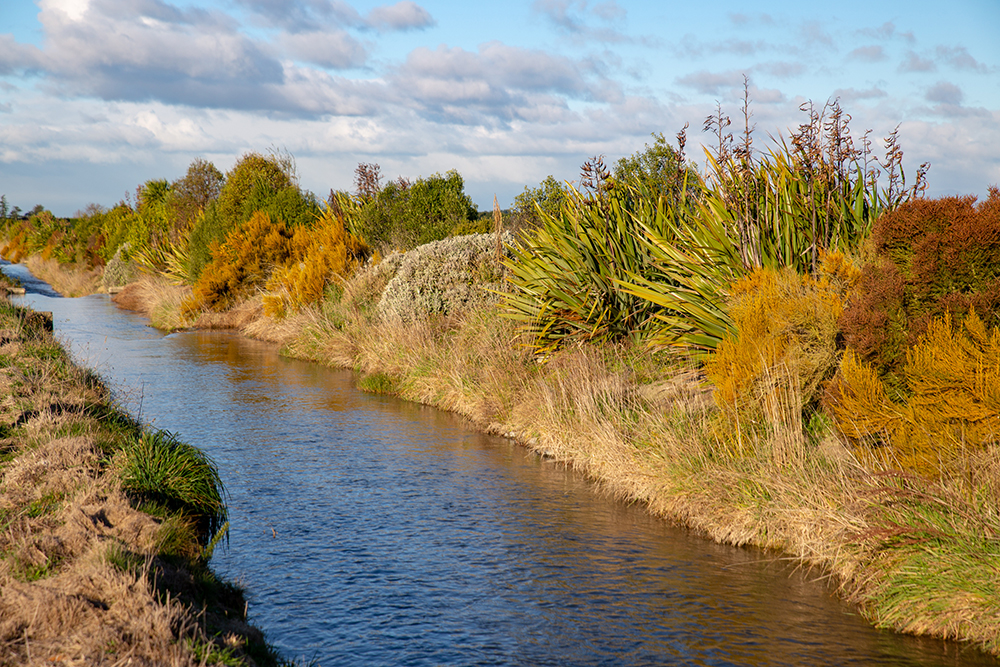AgResearch has been gathering water samples from five sites from the headwaters of the Manawatū River to assess the water quality on Te Miro farm, a dairy unit nestled in the Ruahine Ranges.
Many hands make light work.
Dr Rose Collis knows this better than most.
Rose and her colleagues at AgResearch have been using many hands – some belonging to school children, others farmers, local hapū, and the clever ones belonging to the workers in a pioneering eDNA lab – to assess the water quality on Te Miro farm, a dairy unit nestled in the Ruahine Ranges at the headwaters of the Manawatū River.
The property, owned by Penelope and Blair Drysdale, is visually stunning, and was notably recently featured on Country Calendar.
Rose and her AgResearch mentor Dr Adrian Cookson have joined ‘Team Drysdale’ to look beyond its natural beauty and into its DNA.
Rose explains: “We have been gathering water samples from five sites from the headwaters of the Manawatū River downstream to where the river that runs through the farm. The samples are then sent off to Wilderlab (more about them soon) and we get the results and use them to look at the farm’s ecosystem and water quality.
“The sampling, which can be done by anybody, is a really good way to be able to connect with our community groups and are a way to look at changes over time and visualize what’s been happening in the in the catchment area.”
The Drysdales implement a regenerative/organic production method and have taken a holistic approach to improve ecological systems at Te Miro. They, and the community, who have mucked in with planting natives beside the river, are now reaping the rewards of their work.
Team-mates all getting their hands dirty include Maori from Rakautatahi, Te Kāuru Eastern Manawatū River Hapū Collective, Arapera Paewai and the Taiao Ora Contracting team, the Mauri Oho Project team, Shaun Wilkinson and Amy Gault of Wilderlab NZ, and young hands from Norsewood school, who have been doing some of the sampling and lots of the planting.
Wilderlab is an award-winning environmental DNA (eDNA) testing laboratory based in Wellington. By capturing eDNA from skin, slime, hair, faeces, and microorganisms within the water, the easy to use water sample collection kits allow the detection of a rich variety of fauna and flora present in the waterway which all point to a thriving ecosystem.
One of the more interesting findings we have observed are the before and after Cyclone Gabrielle sample results.
“While we saw an increase in runoff in the aftermath of the event, it wasn’t as bad as you might have expected which just shows how resilient a farm can be when the ecosystems is as healthy as it is at Te Miro,” Rose says.
“There have been other benefits too. We can see some of the tangible impacts Te Miro is having by chatting with farmers and community groups. They have often heard about E. coli or phosphates or nitrates, but with the eDNA results they now have a more tangible idea of the health of the waterways balancing what they’ve seen with what we’ve detected with the eDNA analysis.
“But importantly, with the standard water quality attributes that we’ve also recorded, together we can see whether there are any relationships between freshwater biodiversity and the E. coli, nitrogen, phosphorus and turbidity metrics. They can see what that actually means in terms of where we’re sitting and how can we improve that.”
The headwaters of the 180-kilometre-long Manawatū River is sacred and local hapū live alongside the river – an important source of food and means of travel. Rose said this was also an important and rewarding part of the research.
“We are humbled that we can contribute to the kaupapa alongside other catchment community groups, and we share the pride they are taking in restoring the mana of this waterway.”
AgResearch, as a Crown research Institute, employs over 400 scientists who all work in a trans-disciplinary way.
“One of the capabilities we have been developing is Nanopore long read sequencing for water metagenomics, which is a research tool that enables a deep dive into the microbial eDNA component and allows the identification of risks associated with different pathogens and antibiotic resistance genes,” Rose says.
“This provides important capability development and complements the partnership with catchment community groups where a much broader ‘tree of life’ approach is taken,” says Rose.
AgResearch hopes to share and publish some of the methods we’ve used to really showcase our capability in academic papers shortly. However, deep scientific understanding takes times.
Source: AgResearch












